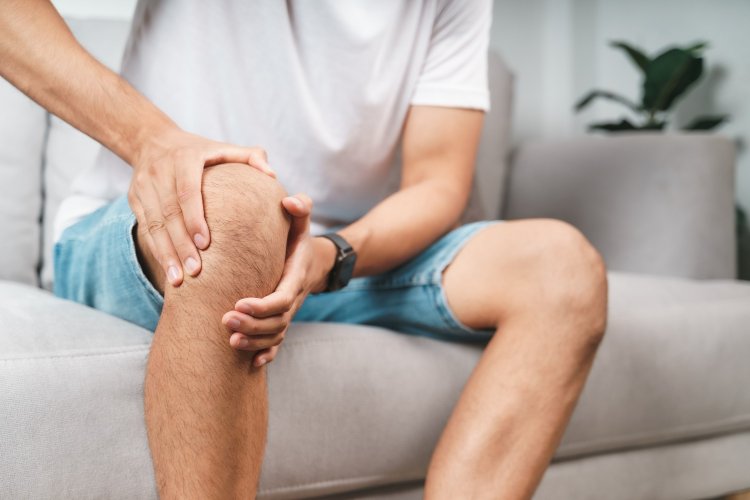Aching Knees? Understanding and Overcoming Osteoarthritis
Osteoarthritis (OA) is the most common form of arthritis, affecting millions of people worldwide. It occurs when the protective cartilage that cushions the ends of the bones wears down over time. Although osteoarthritis can damage any joint, it most commonly affects joints in the hands, knees, hips, and spine.

Symptoms of Osteoarthritis
Knee osteoarthritis symptoms often develop slowly and worsen over time. They include:
- Pain: The most common symptom, which can be felt during or after movement.
- Stiffness: Particularly noticeable upon waking up or after periods of inactivity.
- Tenderness: The joint may feel tender when light pressure is applied.
- Loss of Flexibility: Difficulty moving the joint through its full range of motion.
- Grating Sensation: You might feel or hear a grating sensation when using the joint.
- Bone Spurs: Extra bits of bone, which feel like hard lumps, may form around the affected joint.
- Swelling: Caused by inflammation in the soft tissues around the joint.
Causes of Knee Osteoarthritis
Multiple factors can contribute to the development of knee osteoarthritis, including:
- Age: The risk increases with age as the wear and tear on the joints accumulate.
- Gender: Women are more likely than men to develop osteoarthritis, especially after age 50.
- Joint Injuries: Injuries from sports or accidents can increase the risk of osteoarthritis.
- Obesity: Excess weight puts additional stress on weight-bearing joints, particularly the knees.
- Genetics: A family history of osteoarthritis can increase the risk.
- Bone Deformities: Some individuals are born with malformed joints or defective cartilage.
- Repetitive Stress: Jobs or activities that put repetitive stress on a particular joint can contribute to osteoarthritis.
What Helps with Osteoarthritis?
There is no cure for osteoarthritis, but several treatments can help manage the symptoms and improve quality of life:
Medications
- Pain Relievers: Over-the-counter options like acetaminophen can help relieve pain but do not reduce inflammation.
- NSAIDs: Nonsteroidal anti-inflammatory drugs such as ibuprofen and naproxen help reduce pain and inflammation.
- Corticosteroids: Injections of corticosteroid medications can reduce inflammation and pain in the joint.
- Hyaluronic Acid Injections: These injections provide cushioning and lubrication to the knee joint.
- Topical Pain Relievers: Creams and gels applied directly to the skin over the affected joints.
Physical Therapy
Physical therapy can play a crucial role in managing knee osteoarthritis. Techniques include:
- Exercise Programs: Tailored exercises to strengthen the muscles around the joint, improve flexibility, and reduce pain.
- Manual Therapy: Techniques used by physical therapists to relieve pain and improve joint function.
- Heat and Cold Therapy: Applying heat or cold packs can reduce pain and swelling.
Lifestyle Modifications
Making certain lifestyle changes can help manage symptoms and improve joint health:
- Weight Management: Losing weight can reduce stress on weight-bearing joints, particularly the knees.
- Low-Impact Exercise: Activities like swimming, cycling, and walking can help improve joint function without putting too much strain on the joints.
- Assistive Devices: Using braces, shoe inserts, or a cane can help alleviate pain and improve mobility.
- Healthy Diet: Consuming a diet rich in antioxidants, vitamins, and minerals supports overall joint health.
Surgical Options
For severe cases of knee osteoarthritis, surgical interventions may be considered:
- Arthroscopy: A minimally invasive surgery to remove or repair damaged tissue.
- Osteotomy: Surgery to realign the bones to relieve pressure on the joint.
- Partial or Total Knee Replacement: Replacing the damaged joint with an artificial one can provide significant pain relief and improve function.
Exercises for Knee Osteoarthritis
Regular exercise can help manage knee osteoarthritis by strengthening the muscles around the joint and improving flexibility. Here are some recommended exercises:
Leg Raises
Lie flat on your back, bend one knee, and keep the other leg straight. Lift the straight leg to the height of the bent knee. Hold for a few seconds and lower slowly. Repeat with the other leg.
Hamstring Stretches
Sit on the floor with both legs straight. Reach for your toes to stretch the back of your thighs. Hold for 15-30 seconds and repeat several times.
Quadriceps Strengthening
Sit on a chair with your feet flat on the floor. Slowly extend one leg out straight and hold for a few seconds. Lower slowly and repeat with the other leg.
Calf Raises
Stand near a wall or chair for balance. Raise your heels off the ground, hold for a few seconds, and then lower slowly. Repeat several times.
Walking and Cycling
These activities help keep your joints flexible and muscles strong without excessive strain. Aim for at least 30 minutes of moderate exercise most days of the week.
How to Prevent Osteoarthritis
While osteoarthritis cannot always be prevented, certain strategies can reduce your risk and help maintain joint health:
- Maintain a Healthy Weight: Reduces stress on your joints, particularly the knees.
- Stay Active: Regular physical activity strengthens muscles and helps maintain joint flexibility.
- Avoid Joint Injuries: Use protective gear during activities and ensure proper technique during exercise.
- Healthy Diet: A diet rich in antioxidants, vitamins, and minerals supports overall joint health. Omega-3 fatty acids found in fish, nuts, and seeds can help reduce inflammation.
- Regular Check-Ups: Being aware of your family history and having regular medical check-ups can help in early detection and management of osteoarthritis.
In conclusion, Knee osteoarthritis can significantly impact quality of life, but with proper management, individuals can alleviate symptoms and maintain an active life. Treatments include medications, physical therapy, lifestyle changes, and potentially surgical interventions. Regular exercise, weight management, and a healthy diet play crucial roles in both managing and preventing osteoarthritis. Staying informed and proactive in your health care can help you manage the condition effectively.
Disclaimer: The information provided in this article is for educational purposes only and should not be considered medical advice. If you have any health concerns or are experiencing symptoms, it is important to consult with a healthcare professional, such as a doctor or clinic, for proper diagnosis and treatment. Always seek the advice of your doctor or other qualified health provider with any questions you may have regarding a medical condition. Do not disregard professional medical advice or delay in seeking it because of something you have read in this article.
#Osteoarthritis #JointHealth #KneePain #PhysicalTherapy #HealthyLiving #PreventOsteoarthritis #ExerciseForHealth
What's Your Reaction?





















